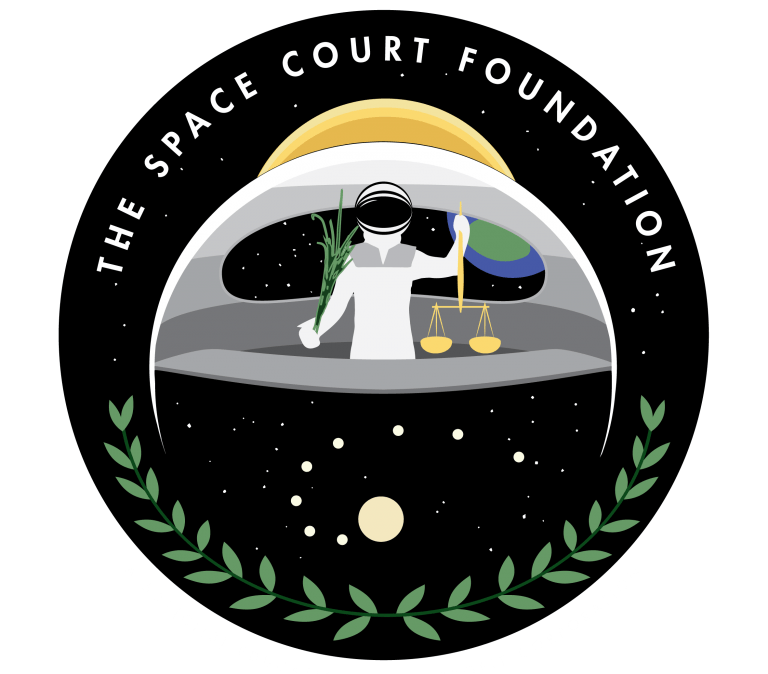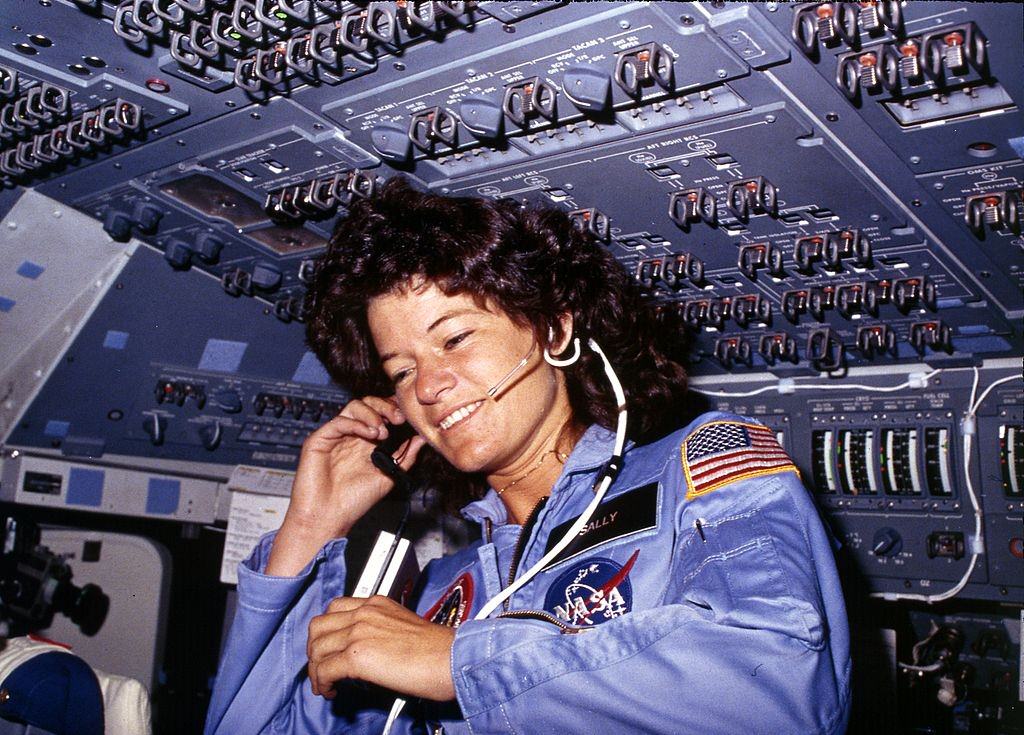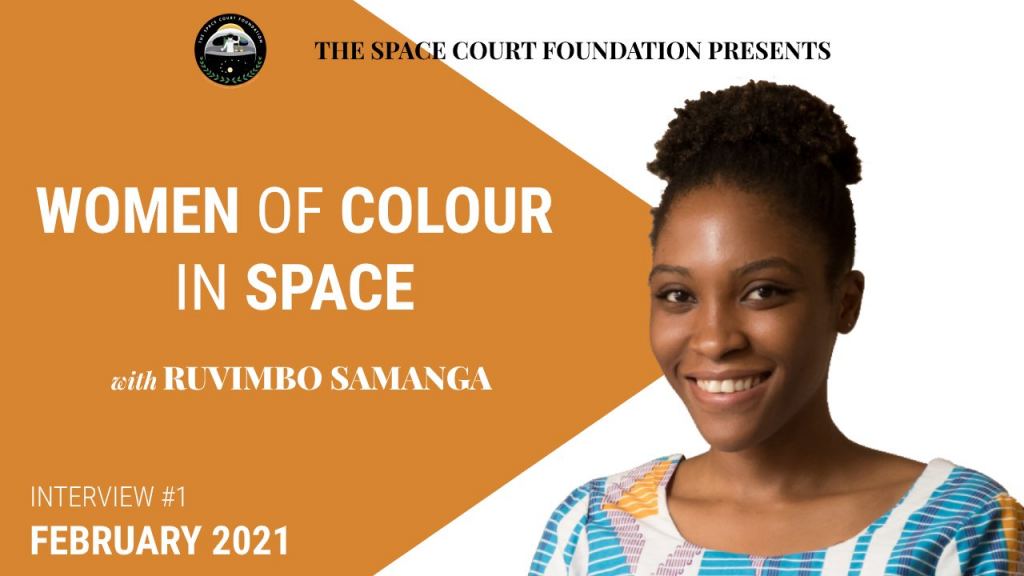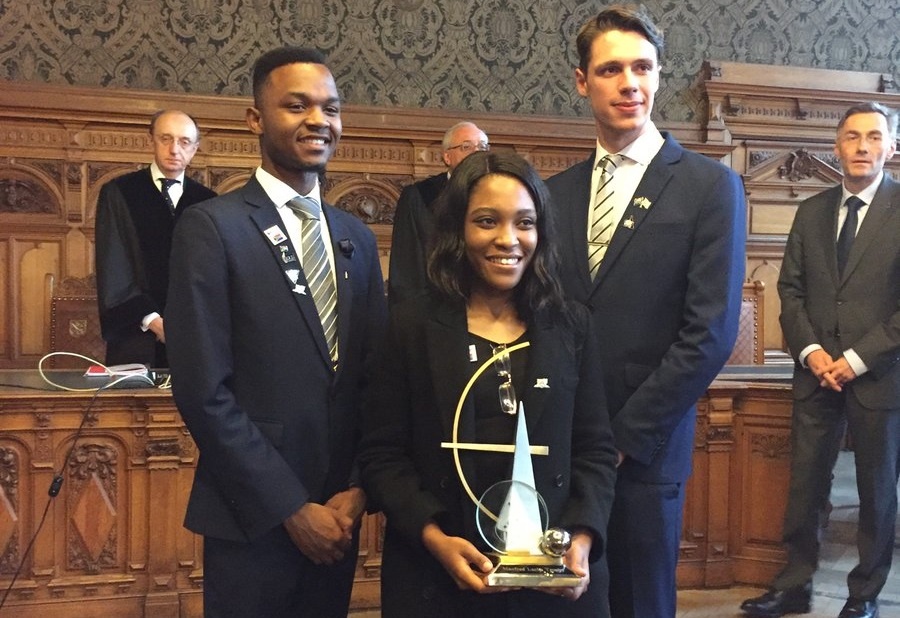In the coming generations, humanity’s presence in space is expected to grow considerably. With everything from space tourism, the commercialization of Low Earth Orbit (LEO), asteroid mining, and maybe even settlements on the Moon and Mars in mind, there appears to be no limit to what we hope to accomplish. Another interesting thing about the modern space age is the way it is becoming more open and accessible, with more people and nations able to take part.
Unlike the Space Race, where two nations dominated the playing field and astronauts corps were almost exclusively made up of white men, space exploration today is more representative. However, there are still many challenges and barriers for women and people of color in space exploration and the related STEAM fields, not all of which are visible. Addressing these requires that we become better at listening to those who deal with them.
To this end, the Space Court Foundation (SCF) is launching a new series titled “Women of Color in Space.” As part of their mission to foster a conversation about space law and the future of space exploration today, this series interviews women of color who have made it their mission to advance space exploration and fulfill the promise of making space “the province of all of humanity.”
The Foundation
Back in September, Universe Today spoke to Chris Hearsey and Nathan Johnson, the founding members of the SCF. As we noted at the time, the SCF was created by legal scholars and space experts to foster a conversation about space law and related issues. In addition, the Foundation seeks to foster outreach and education to raise awareness about the various legal issues that arise in space exploration.
They also want to create the first-ever Law Library and archives, a one-stop source for all materials and questions related to space law. On top of that, they intend to create an animated series titled Stellar Decisis, where members of the Foundation and special guests will engage in mock trials that examines the practice of law and the administration of justice in space.
With the latest installment in their repertoire, the SCF aims to make space law and policy more accessible by promoting an understanding of the hurdles minority communities face in the international space sector. Given the lack of visible representation (as well as a disproportionate level of access to resources and career opportunities), this series kicks off on February 24th with Women of Colour.
Sharing their Experience
This series is the brainchild of Director Mclee Kerolle and Director Nivedita Raju, who are also the directors of International Outreach & Diversity and Legal Affairs and Research for the SCF (respectively).
Kerolle is a graduate of the International Institute of Air and Space Law at Leiden University (The Netherlands), the former Executive of the Space Generation Advisory Council (SGAC), and an active member of the Effective and Adaptive Governance for a Lunar Ecosystem (E.A.G.L.E.) Action Team (a part of the SGAC).

Raju is an associate researcher at the Stockholm International Peace Research Institute (SIPRI), a Research Fellow with the Open Lunar Foundation (OLF), and a former Deputy Representative to the Federal Aviation Administration’s (FAA) Center of Excellence for Commercial Space Transportation at McGill University (Montreal, Canada).
Both Kerolle and Raju were inspired to create a series that looks at the space industry from one of its most underrepresented sides. In addition, as Raju conveyed to Universe Today via Zoom, the issue is one that is very familiar to her:
“There were times when I was either the only woman present or the only person of color present in the room and from a country that has struggled against colonialism and western hegemony. I was determined to make space for myself and ensure that others like me follow.
“So we designed this series to try and amplify voices from minority communities, and add to that the issues of race and gender, we’re hoping that our speakers will be able to share their own experiences and also advise students and young professionals in these communities.”
Alongside Kerolle, the two designed the initiative to address a key issue that most communities from developing nations have to contend with – access to resources. In terms of education on space, international law, and the STEAMs, educational resources and networking opportunities is essential. And yet, not everyone has equal access to these (or at all), which is evident when it comes to representation.

Despite decades of progress, space exploration and the commercial space industry are still dominated by men of European (Caucasian) ancestry. “This series is specifically for women of color,” added Kerolle. “We’re not doing one on gentlemen, and the reason is a lot because there’s the lack of visibility in it. That’s really what it is, so we wanted to just put a highlight on that.”
Invisible Barriers
The types of challenges that women face in this male-dominated industry are made quite plain when you look at the careers of the first women to go to space. On June 16th, 1963, Soviet cosmonaut Valentina Tereshkova became the first woman to go to space aboard the Vostok 6 mission (about two years after Yuri Gagarin became the first man to go to space).
During her nearly three-day flight, Tereshkova orbited the Earth forty-eight times and conducted a number of operations. These included keeping a flight log, taking photographs of the horizon, and manually orienting the capsule. On the first day of her mission, she reported an error in the Vostok capsule’s control program, which she corrected by inputting new data from mission controllers into the system.
Aside from experiencing some nausea during the flight and a nasty bump on the head that she incurred while parachuting from the Vostok capsule after re-entry, the mission was a complete success. However, certain elements within the Soviet Air Force attempted to discredit Tereshkova, claiming that she showed up drunk to the launch pad (hence her case of nausea) and that she was insubordinate while in orbit.

This latter charge was based on the fact that she issued the correction to the ground crews after she discovered the error in the capsule’s control systems – which some in the ground crew clearly saw as a slight. There were also some who claimed that she caused the error, and they were correcting for her mistakes. These accusations were dismissed, however, and Tereshkova became a national hero.
And then you have Sally Ride, who became the first American female astronaut to go to space in 1983 on the Space Shuttle Challenger (STS-7). During a pre-flight press conference, she was asked a number of obviously chauvinistic questions, such as: “Will the flight affect your reproductive organs?”, “Do you weep when things go wrong on the job?”, “Will you become a mother?”
Unrattled, Ride cooly refused to indulge such questions, stating that she viewed herself in only one way: as an astronaut. She did, however, point out the obvious, asking, “How come nobody ever asks Rick those questions?” In her various roles as a space law and industry expert, Raju can attest that this kind of thinking is pervasive:
“I think you could find that there are still a lot of surprises where accomplished women in our field [are concerned]. There’s always going to be a follow-up question related to ‘what about family?’ ‘what about pursuing your own family?’ and ‘what about working on those kinds of goals?’
I find it extremely frustrating because, again, you never ask men those same questions. You never ask men, ‘oh, is it time for you to become a father?’ But inevitably, even in extremely professional environments, you still have questions like ‘where [do] you see yourself in 10 years?’ and ‘wouldn’t you be raising a family then? How will that affect your work?’ That’s still very much a part of our field and one of the struggles that we also deal with.”

Beyond gender, there’s also the issue of cultural barriers and the subtle prejudices that are all too common. In addition to not having the same kind of privileges in terms of education or class, a person’s access to their chosen profession can be limited by language and cultural barriers. As Raju explained, it can even be something as simple as an unfamiliar name, which can provoke a negative response:
“It’s as simple as your name being in a pile of CVs. You’re submitting for a job application, and someone says, ‘Oh, well, this is a name that I’m unfamiliar with. The name is something that I’ve not heard before.’ Passing over South Asian, African, and Latin American names is something that tends to happen on a regular basis. It happens with all women of color, I would say. And that is something that you can definitely see that there are disadvantages like this on a regular basis.”
Sharing Unique Perspectives
Each episode in the Women of Color in Space series will feature a different speaker in a 15-minute interview conducted by Raju. Each speaker will be asked to talk about their work experiences and the difficulties they’ve faced as trailblazers in the field. And of course, the speakers are encouraged to share whatever advice they have for future students and graduates from their respective communities.
For their first episode, which premiers tomorrow (Wed, Feb, 24th), the Foundation spoke to Space Law and Policy Analyst Ruvimbo Samanga. A graduate of the Faculty of Law from the University of Pretoria (South Africa), Samanga is currently a consultant with the United Nations Economic Commission for Africa (UNECA) and (like Nivedita) a Research Fellow with the OFL.

She is also the National Point of Contact for Zimbabwe with the Space Generation Advisory Council, a Ban Ki-Moon Global Citizen Scholar, and the recipient of the 2019 African Space Industry Top 10 Under 30 and 2020 Top Talents Under 25 in the World awards and an advisor to the Space Court Foundation. She is also a recipient of the Mandela Rhodes Scholarship and was recently inducted into the 10,000 Points of Light Program created by Banking On Africa’s Future (BOAF).
As Samanga has attested, the journey that brought her to space law began at the 2018 Manfred Lachs Moot Court Competition finals. Samanga was a semi-finalist in the competition that took place the previous year and returned to coach the team representing Africa in 2018. Not only did they win the 2018 competition, but they were also the first team from Africa to win the competition since its inception in 1991.
And she did it all before she was even 25! Nivedita met Samanga through their mutual involvement with the Open Lunar Foundation (where they are both OLF Research Fellows) and had the honor of seeing Samanga present at the 2018 African Leadership Conference (ALC) Youth Forum in Abuja, Nigeria. Her presentation was based on her seminal paper, titled “Lunar Ethics and the Implication of Resource Mining in Outer Space.”
In both cases, Samanga drew on her own experiences in the African NewSpace industry and using nano-satellites to promote sustainable practices in the farming, mining, and petroleum industries. In the end, she showed how the lessons learned from this could help inform policies for lunar mining and settlement and offer a framework for African governments interested in leveraging space applications to promote socioeconomic development.

Since then, Samanga has launched a startup called Agrispace – based in Bulawayo, Zimbabwe – that seeks to leverage space technology to help farmers simultaneously meet the rising demand for food and reducing the overall environmental impact of farming. Given their familiarity with her work and accomplishments, Mclee and Raju knew that Samanga would be the perfect candidate to kick off the SCF’s Women of Color series. Said Raju:
“Our first speaker, Ruvimba Samanga, is an inspiration. I think that she is she’s definitely someone who exemplifies all of the qualities of a leader in the industry. She spoke about how the intersection of gender and race has affected her own access to resources, what that would mean for other students and other young professionals in Zimbabwe.
“She talks a lot about her work and how it has been difficult, even in terms of a University education. When you have subjects like the law, and when you’re not able to access certain textbooks or even quality case records, then that does ultimately have an impact on the quality of the research and your career as well. So in terms of identifying what those issues are and enabling accessibility, our first episode went way beyond my expectations.”
In addition to the many hats she wears, Samanga is presently working with the recently established Zimbabwean Space Agency as well. She also participated in the 39th mission of Habitarte Marte, an analog research environment located in Brazil near the town of Natal. As we covered in a previous article, this research group was founded by Professor Julio Rezende in 2017 and is South America’s only Mars-analog research station.
The Road Ahead
Looking to the future of space exploration and the level to which it is representative of humanity, two questions naturally come to mind. On the one hand, we’re forced to wonder if we’ve truly made any progress. Second, there’s the all-important question of what needs to be done moving forward. Mclee and Raju, for their part, are hopeful and optimistic. At the same time, they are cautious and know that there is a lot of work to be done.
“You don’t want these differences to be under the table,” said Mclee. “You want to celebrate the differences that people have. You see a lot of performative activism happening in the industry now because of everything that’s going on, but you don’t want to just do it for the sake of doing it. That’s why we’re having this interview series, to highlight the people, the actual people aspect behind it too.”
“When you highlight the lack of women of color in the space industry, the defensive response is to mention famous astronauts: ‘Oh, but we have had women of color as astronauts.'” added Raju. “But that’s also only one segment of the space sector. Here, we’re talking about policy, we’re talking about engineering, we’re talking about astrophysics, and there isn’t sufficient representation there.”
By making resources available, the Women of Color in Space series is in keeping with the overall mission of the Space Court Foundation, which is to foster a conversation about space-related issues and promote awareness. Similarly, the series is meant to inspire and to let young women of color today (and the next generation) know that they can make a difference in the STEAM fields and the international space industry.

Herein lies another insidious barrier, where people are raised to believe that (by virtue of gender or geography) they can’t follow certain paths. As Raju summarized beautifully:
“We want future Trail Blazers to watch the series, be encouraged, know that their voice matters, and that we will be able to hear them – that we’re all available here. You can find membership in this industry, even if it hasn’t been very supportive to you so far, based on these oppressive structures. We are here actively trying to fight that on a daily basis, and we’re going to try and support them through that process as much as possible.”
By helping to identify and dismantle the oppressive structures that are part of our society and the international space sector, the Space Court Foundation is living up to another purpose for which it was founded: the preservation of the spirit of the Outer Space Treaty, which was signed in 1967 and established the guiding principle that space is for the benefit of “all peoples.”
In the past, the word “mankind” was repeatedly used to imply all of to humanity. This reflected the prevailing power structure of the time, which was also evidence from the way space exploration was very much restricted to white cis-males. The current era of space exploration, in contrast, is all about fostering cooperation, increasing accessibility, and breaking down traditional barriers. I think we can all agree that there are few barriers worse than an unwillingness to listen or entertain different perspectives.
Tune in tomorrow to hear more about Samanga’s journey, which you watch on SCF’s Youtube channel, or by going to the SCF website. Samanga’s interview will be available after 12:00 P.M. CET (or after 03:00 A.M. PST; 06:00 A.M. EDT). It promises to be very educational and inspirational!
Be sure to subscribe as well so you will be notified in advance about the latest interviews in the Women of Color in Space series. Also, be sure to check out the Space Court Foundation’s home page to learn more about their purpose, advocacy, research, and outreach.
Further Reading: Space Court Foundation

